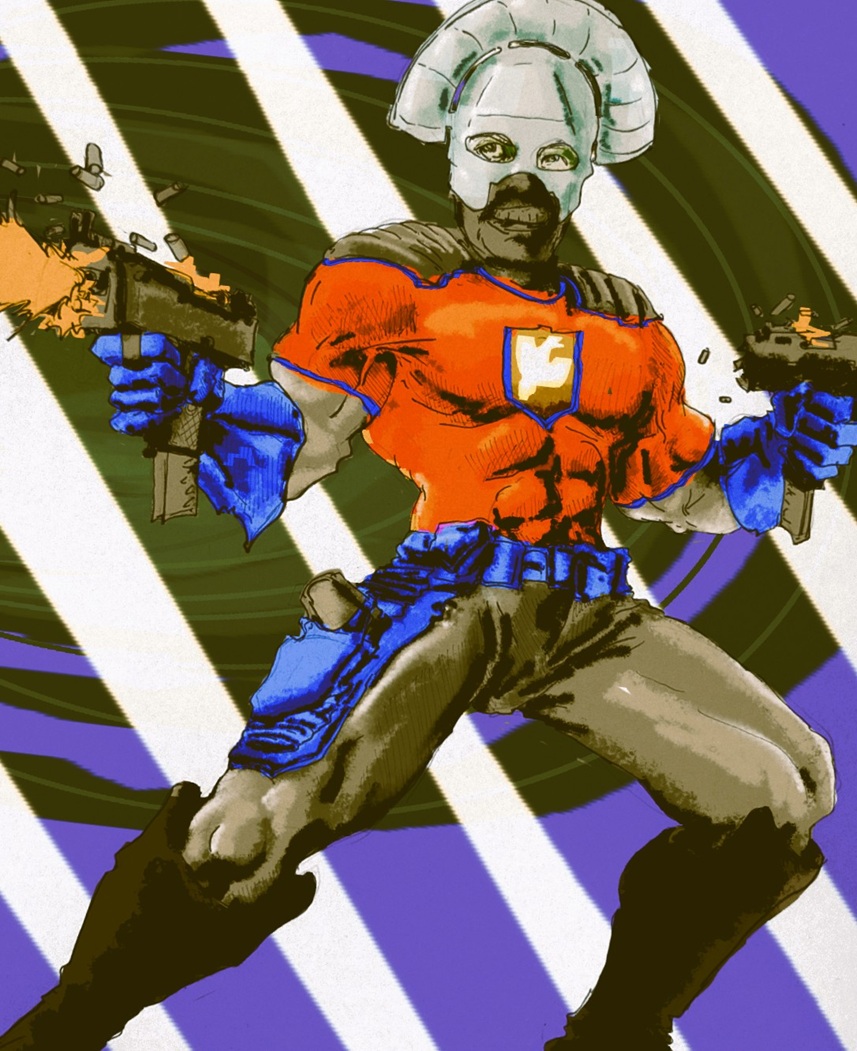Fred and Loathing on The Internet
Welcome to the public web log of Fred Lambuth

This is the blog! I talk about books, video games, movies and podcasts of all types. It's not much, but it's honest work.
Topics
Archives
Spy novels themselves are the topic today. Why? Oh, just because there is one particular spy novel I have read recently. That novel would be Red Sparrow by Jason Matthews. Thus we have something blog-worthy to talk about. There’s other media consumption going on, mind you. New films. Old films. Comic books! Among those choices, we here at the editorial dept went with Red Sparrow. And about what I like about spy novels.
Before we go on, I will flat out state that I liked the book. I felt that the writer was enjoying himself while he wrote the thing. From what I have gathered (among my trusted sources), is that he is an ex-CIA professional of many years. Knowing that, I picked this book up hoping for the closest thing to a true-crime spy novel. Who else could write an accurate depiction of the post-Cold War spy game other than a recent veteran?
There were a lot of very cold clinical depictions of true-to-life spycraft in this book. There is no denying this guy knows what it is to follow somebody or check if you are being followed. The modern espionage tactics; the up close and personal level of spying, was accurately depicted. Meaning he gave painstaking attention to describing how people walking around a metropolitan area can be surveilled. Sometimes the storytelling would be inverted when the protagonist try to thwart these textbook surveillance techniques.
The book contains numerous pages dedicated to players in the intelligence game watching...
So far in the publication history of the blog here at fredlambuth.com we have talked about robots, big and small. We have blog posts mentioning samurais, superheroes, super-soldiers, super drunk hardboiled detectives, secret agents, stygian knights, seafaring pirates. There have been orks, space orks, and even space princes. What has been missing among this pattern is the cornerstone of boyish simplicity: cowboys and indians. Good guys and bad guys. The team here grew up in Western civilization, so it’s usually the cowboys playing for the good guys and the Indians for the bad.
Cowboys, by themselves, had in fact been written about in this blog. By way of the Red Dead Redemption games. The video game where I put in 100s of hours toward simulating the life of an outlaw cowboy. The kind of cowboy seen in Hollywood or Italian Western films of the mid twentieth century. Not the actual ‘cow’ ‘boys’. The video game was about robbing trains, playing poker, dueling with pistols, and the like. It was not about rural low lives who drove herds of cattle between ranches and railheads in the ol’ Southwest. Those cowboys would make a boring game. ( They do. I hated the ranching missions. )
Indians rarely appear in either of the RDR games. The bad guys in RDR, is the advance of Western civilization. A societal mass, with European settlers serving as a vanguard for the new way of life cutting into the American continent. The Red Dead Redemption games are indeed about the...
Had there not been a string of successful comic book movies a decade or so ago, I do not think I would be writing a blog post about The Peacemaker. He’s a forgettable comic book hero from the Bronze Age of comic book publishing, which was a forgettable time in comics that only interests the most stalwart of nerds. Speaking as one of those stalwart comic book nerds, I say I do not remember a damn thing about The Peacemaker. I read every comic book I got my hands on during the early 90s. Had Peacemaker been on one of those pages, he did not leave a lasting impression.
A few days prior to writing this blog post I skimmed through the Wiki entry. Clicked around the names and publications involved with the comic book iterations of The Peacemaker. His first incarnation’s specifics were dreary enough to be forgotten by now. The costume looks utterly ridiculous, and unchanged throughout his publication history that could be found. I suppose his swashbuckling appearance can be attributed to American nationalism. Had I given this character more than a second glance in the heyday of my nerd past, it was likely as a gag in Wizard magazine (see blog post #128 for more about Wizard!). I can almost conjure some joke about how silly the helmet looks, or its similarity to Big Barda’s costume.
Be that as it may, I do know of The Peacemaker now. The formal introduction happened when he was a part of The Suicide Squad movie released in 2021. The one with the ‘The’ in the...


